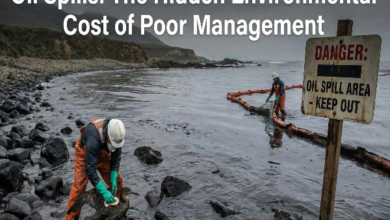Basildon South: History, Politics, and Transformation of a Former UK Constituency
Understanding the Evolution of Basildon South and East Thurrock in the Political Landscape of the East of England
Basildon South, officially known as South Basildon and East Thurrock, was a UK parliamentary constituency that played a significant role in the East of England’s political landscape from 2010 until its abolishment in 2024. Located within Essex, it brought together communities from Basildon and Thurrock, representing a diverse electorate with deep ties to both industrial and suburban life. Following the 2024 boundary review, the constituency was dissolved, marking the end of an era and the beginning of a new political chapter for the region.
Introduction to Basildon South
Basildon South, or South Basildon and East Thurrock, was one of the UK parliamentary constituencies established in 2010. Situated in the East of England, it combined parts of the bustling Basildon borough with sections of Thurrock, creating a constituency with a unique mix of industrial heritage, suburban housing, and coastal communities.
Its creation was the result of boundary adjustments that sought to balance population representation across parliamentary seats. For 14 years, the constituency became a key battleground in general elections, reflecting broader national shifts in political loyalty and voter behavior. With its diverse demographics and location between London and the Essex coast, Basildon South stood out as a microcosm of working-class Britain in the 21st century.
Historical Background
Creation of the Constituency
South Basildon and East Thurrock was established for the 2010 general election as part of the periodic boundary review. Before its creation, areas within the constituency had been represented under different seats, such as Basildon, Thurrock, and Billericay. The new constituency was formed to improve electoral balance while maintaining ties between Basildon’s suburban communities and Thurrock’s industrial and river-based settlements.
Location and Composition
The constituency covered both urban and semi-rural areas. In Basildon, it included wards such as Langdon Hills, Nethermayne, Pitsea North West, and Pitsea South East. From Thurrock, it encompassed Corringham, East Tilbury, Orsett, Stanford-le-Hope, The Homesteads, and later Chadwell St Mary.
This mix created a constituency where voters came from varied backgrounds—ranging from suburban homeowners to industrial workers, small business owners, and commuters into London.
Political Landscape
Representation Over the Years
From its creation in 2010 until the 2024 election, the seat was held by Stephen Metcalfe, a Conservative Member of Parliament. During his tenure, he witnessed major national events such as Brexit, changes in government leadership, and shifting political attitudes.
In the 2024 general election, following the boundary changes, the seat was contested under new definitions. The race was extremely close, and James McMurdock, running as an Independent candidate after splitting from Reform UK, secured the seat by fewer than 100 votes. This marked a major political shift and highlighted the constituency’s volatility.
Electoral Patterns
Basildon South developed a reputation as a bellwether seat, often reflecting the broader mood of the country. Its voters leaned heavily toward Leave in the 2016 Brexit referendum, with one of the highest percentages of support for leaving the European Union. This trend strongly influenced subsequent general elections, as parties like the Conservatives and Reform UK capitalized on the area’s Euroscepticism.
The 2024 Boundary Review and Abolishment
Why Boundaries Changed
The Boundary Commission for England regularly reviews parliamentary boundaries to ensure fair representation, adjusting seats as population shifts occur. By 2024, the constituency of South Basildon and East Thurrock was redefined and legally abolished.
The changes included:
Removal of the Vange ward from Basildon.
Addition of Chadwell St Mary from Thurrock.
Adjustments to smaller polling districts, with areas like Bowers Gifford and North Benfleet moved to neighboring constituencies.
What Happened Next
While the name “South Basildon and East Thurrock” continued to be used in 2024, the new boundaries meant it became a new constituency in legal terms, distinct from its 2010–2024 predecessor. For many residents, however, the name and political identity of “Basildon South” carried forward, preserving its legacy even as maps changed.
Demographics and Community Profile
A Working-Class Heartland
The constituency reflected the working-class roots of Basildon and Thurrock. Many residents worked in manufacturing, logistics, retail, and service sectors. At the same time, suburban housing developments made the area popular among commuters to London.
Key Features of the Population
High Homeownership: Many families owned their homes, reflecting Basildon’s history as one of the UK’s post-war “new towns.”
Car Ownership: Above-average car ownership, due to the suburban layout and commuting patterns.
Brexit Support: With a Leave vote of around 73%, the constituency became a symbol of strong Eurosceptic sentiment.
House Prices: Lower than the UK average, making it attractive for first-time buyers and young families.
Economic and Social Characteristics
Basildon South combined suburban life with industrial heritage. Thurrock’s proximity to the River Thames meant industries like shipping, logistics, and warehousing were significant employers. Basildon itself had grown from a post-war development into a thriving town with retail centers, business parks, and residential communities.
Challenges included rising living costs, housing shortages, and economic pressures affecting working-class families. Yet, the area also benefited from strong transport links, with easy access to the A13, A127, and rail services connecting to London.
Significance in National Politics
A Swing Seat
Because of its mixed demographics and voting behavior, Basildon South was often seen as a barometer of national politics. Its results mirrored national trends in several general elections. The seat was vital for the Conservatives, but also became a testing ground for Labour and, later, Reform UK.
Brexit and Beyond
The Brexit referendum amplified the constituency’s importance. As one of the strongest Leave-voting areas, it influenced how parties tailored their messages on sovereignty, immigration, and economic independence. This helped shape national discourse and made Basildon South a focal point of political debate.
The End of an Era
By ceasing to exist in its original form after 2024, Basildon South joined the list of UK constituencies reshaped by boundary reviews. For many, its abolishment was symbolic of how political landscapes evolve alongside demographic and geographic realities.
Though the constituency name continues, the old boundaries are now part of history. Future generations will view Basildon South as both a representation of working-class resilience and a political case study in the shifting sands of 21st-century Britain.
Legacy of Basildon South
The legacy of Basildon South lies in its role as a political bellwether, its working-class identity, and its contribution to national debates like Brexit. It highlighted the challenges of suburban and industrial communities, balancing local needs with national politics.
For political analysts, Basildon South remains a fascinating example of how electoral geography shapes outcomes. For residents, it will always be remembered as their voice in Parliament for more than a decade.
Conclusion
Basildon South, or South Basildon and East Thurrock, may no longer exist in its original form, but its story captures the evolving nature of democracy in the UK. From its creation in 2010, through years of political change, to its abolishment in 2024, it stood as a constituency that reflected the hopes, struggles, and aspirations of ordinary people in the East of England.
Its journey demonstrates how constituencies are more than lines on a map—they are living communities whose voices shape the future of the nation.


